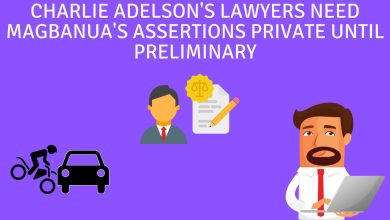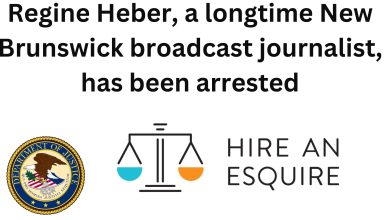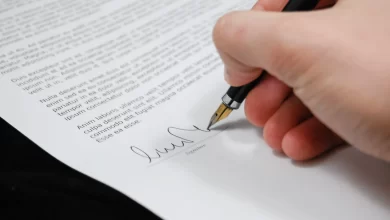10 Tips to (Finally) Organize Your Law Office
What do I mean by CHAOS — and what’s with the caps? If you have read any of my past articles here at Attorney at Work, you know I have a thing for creating acronyms: D-A-F-T, SAD, Ctrl Journal, BYOB. One day I’ll create a dictionary of them all, but for now, I’m concentrating on one of my favorites — the CHAOS of the office.

1. Getting organized is a choice.
Plain and simple, you have to choose to do something about the chaos that is your office. Continuing to do what you have always done will result in the same frustrations, stresses and negatives. And as the world flings even more data and to-dos at you, the problem will only get worse.
It will be hard, but you will have to decide to make yourself change — to stop ignoring the problems with your office and its workflow and take action to get organized.
2. Knowing what you need to get done is half the battle.
This is where most people find themselves at a loss. You decide to get organized but either don’t know what needs to be done or don’t know how to get organized. Start with a clean pad of paper and begin writing down everything you need to do “for the office.” Then rework the list into similar items — tasks that can be batched or, even better, delegated and off your personal to-do list altogether!
3. Balance is bullshit.
Think about it. Balance just means you could be giving 98% to your work and 2% to everything else. The scales are balanced, but are you? No! So stop trying to juggle everything. Instead, learn how to control the flow, so you don’t drown in the digital.
4. Write stuff down.
I am a digital warrior, but that does not remove the need for me to write things down, by hand, on paper. Studies show that writing helps people store and recall information. You think about it differently than you think about things you type. But that’s not the only reason I write things down: There’s an intention when you commit something to paper.
I write things down in my Ctrl journal — my process for daily note-taking. This is where I list my three MIT (Most Important Things) each morning, and where I have a spot for free-form note-taking plus a spot for structured notes. My journal also contains a calendar with annual dates and ongoing commitments.
Here’s my process.
Each morning I begin the day by flipping to a new spread in my Ctrl journal, where I write the day and date, and list 1, 2, 3 in the upper right. This could be the initials of a person I want to connect with or a few words about the item I need to get done.
In writing down this daily list of three, I not only commit to them, I also:
- Have a visual reminder of what I need to get done.
- Give myself a way to feel good by crossing off items as completed.
- Create a record of what I have done (or not) — all with just a couple of initials or words.
Not bad, for one little habit! That said, I truly believe this next tip is the most important.
5. Wake to a fresh new day.
Once you get your law office’s processes, workflow, systems and technology organized, you will feel tremendous gratification. It won’t last.
I’m not saying the habits you create won’t last, but even the most organized person will have some really disorganized days. Sometimes weeks. That’s OK. When it happens, just remember that tomorrow you get to wake to a fresh new day, pull out a pad of paper and start getting everything out of your head. (See No. 2 above.)
6. Start with just one problem area.
We’ve already established that you have A LOT to do. Don’t try to set up every single system at once. Instead, choose one single area to work on at a time. For example, all the incoming paper is a big problem for many businesses. By getting paper under control, you immediately eliminate a lot of the clutter.
Decide where to start based on how you complete this sentence:
“The thing that bothers me most in my office is … ”
7. Choose a law office organization system you know you will be able to work with.
Simple is generally best — anything too complicated might become overwhelming. Why set yourself up to fail? Remember, if paper management (or whatever area you are trying to improve) was easy for you, you would not be in this bind in the first place.
8. Put together the items you need to implement your law office organization system.
Organizing paper (piles) might require file folders, file cabinets, binders, a good scanner and so on. Don’t let a lack of sticky notes sabotage your organizing effort. Establish an incoming mail center. Take notes as you go to memorialize the steps you are taking with each repetitive task, and carefully follow all directions in implementing any system.
9. Don’t try to do all the organizing your business needs at one time.
Once you’ve gathered the tools you need and understand the steps required, further breakdown and work on organizing the pile or inbox or to-dos as you can throughout your day. You’d be surprised how quickly things get done in only 10- or 15-minute blocks.
If you find that the system you are using does not address a particular need, fix it. Decide how to handle that need going forward, and add it to your system. The beauty of organizing your practice using systems — even systems other people create — is that if something doesn’t work, or you need to add something new, you can make changes at any point and reorganize as you go.
10. Make no excuses
Finally, you must use your system like clockwork. That is the only way any system will work well for you.






















